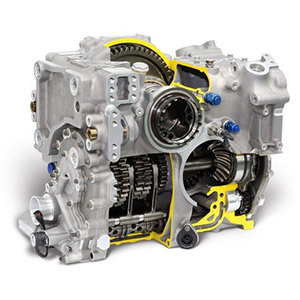R&D Tax Credit News

Tax Credits and Incentives as Alternative Sources of Non-Dilutive Funding
May 29, 2019
A few weeks ago, I had the privilege of representing Hull & Knarr at Kinetic Indiana and share our expertise in R&D Tax Credits and Local and State Incentives. Every year, Elevate Ventures organizes Kinetic Indiana to give entrepreneurs and investors access to knowledge, networks, and opportunities to accelerate their start-up businesses. Kinetic has grown tremendously over the years and achieved a considerable amount of success, particularly in this last edition, posting impressive numbers:
- Attendees: 455
- Investor one-on-one meetings: 214
- Speakers: 52
- Venture Capital firms represented: 45+
This year, Elevate Ventures invited us to participate as part of a panel on Non-Dilutive Capital Sources and Tax Credits. Non-Dilutive Capital is a very interesting topic because we know that a wide range of companies qualify for Federal and State Tax Credits, but very few take advantage of them. The topic is also close to home because both Hull & Knarr and Elevate Ventures see it as their mission to fuel the growth of entrepreneurs, startups, and the entrepreneurial ecosystems.
What is Non-Dilutive Capital?
That sounds great, but what is Non-Dilutive Capital? Simply put, non-dilutive capital is any capital source that does not require equity in exchange. In this way, non-dilutive “financing” allows businesses or business owners to receive money without giving away any ownership of the company itself. Non-dilutive capital sources could be anything from a loan from a bank or a grant from your state’s economic development agency.
Conversely, Dilutive financing is any kind of fundraising where the business or business owner gives up at least some ownership of the company. For example, selling shares to angel investors or venture capitalists.
Non-Dilutive Capital in an important part of a company’s capital stack. Make use of as many non-dilutive dollars as you can even if you plan on taking in dilutive investment. At minimum, non-dilutive capital will help stretch the cash available to the company and delay the next round of dilutive funding.
Types of Non-Dilutive Financing
There’s a wide variety of capital sources considered non-dilutive. Here are just a few sources that can inject capital into the business without giving up ownership.
- Loans generally require a credit check, collateral, and guarantors. And they must be paid back with interest.
- Grants, on the other hand, do not need to be repaid. There are several different types of grants for small businesses and start-ups. Usually, they require the submission of an application and, most of time, are tied to a specific project or business milestone. And the business is generally required to provide status reports on the project and/or the business milestones.
- SBIR and STTR Programs offer funding from small seed grants for risky research to large, multi-year contracts that support multi-faceted programs. These programs focus primarily on projects that support the US Government through the Department of Defense (DoD), National Institute of Health (NIH), Department of Energy (DoE), and many others. SBIRs/STTRs are a great way for businesses to work out the kinks of their technology and products before reaching full commercialization.
- Licensing is a good way to get upfront payments from industry partners as well as regular monthly or quarterly payments to fund the business and additional development.
- Royalty Financing allows the business to receive cash in exchange for a percentage of the company’s future revenues over a certain period and up to a certain amount.
- Tax Credits offset past, current, or future tax a business generates. They can be refundable or non-refundable, meaning that the business receives them even if there was no tax generated (refundable) or only if tax was owed (non-refundable).
Tax Credits as Non-Dilutive Capital
Tax Credits are probably the simplest way to inject non-dilutive capital into the business. These dollars are already available to taxpayers and are guaranteed by Federal or State law. For eligible companies, Tax Credits can be combined with other capital sources to make the funding go further. Also, because Tax Credits dollars are nondescript, they can be used to fund costs that were not used to compute the credits such as marketing, HR, employee benefits, employee engagement, technology infrastructure, etc.
Hull & Knarr focuses on two different Tax Credits. We’ll talk about them and share how businesses can take advantage of them in Parts 2 and 3 of this series.
- State and Local Incentives are meant to fuel business activity and growth in a state, county, city, or municipality. They generally range from tax incentives for hiring employees in the area (very common) to providing capital for a construction project. Programs vary from state to state but are available to most businesses as refundable and non-refundable tax credits.
- R&D Tax Credits are available for companies that create or improve products, processes, or software. Between the Federal and States R&D Credits, businesses can recoup up to 15% of the eligible expenses in Research & Development for any given year. The Credits can be refundable and non-refundable depending on the jurisdiction and can be combined with other non-dilutive capital. In the case of the SBIR program, business receive funding to develop a new applied technology, as well as an R&D Credit for developing such technology.
How do I take advantage of Non-Dilutive Capital?
The answer mostly depends on what sources of capital you’re looking for: loans, grants, SBIR/STTR, or tax credits. As you consider your fundraising alternatives (dilutive and non-dilutive), consult with experts in the capital source you’re considering to understand if you qualify and what steps you can take to benefit.
In the end, your goal is to grow your business while giving away as little of it as possible to potentially disinterested parties. Non-dilutive capital can help you accomplish just that. Click on the links below to learn more about State and Local Incentives and R&D Tax Credits available to you:
Part 2 – State & Local Incentives
Part 3 – R&D Tax Credit
Featured Projects





